- Inicio
- Arquitectura
- _RASCACIELOS
- __Burj Khalifa Dubai
- __Edificio Chrysler, NY
- _Estilos Arquitectónicos
- __Arquitectura Posmoderna
- __Deconstructivismo
- Arte
- _Arte Universal
- _Arte Contemporáneo
- __Serge Marshennikov
- __Damian Lechoszest
- __John Kacere
- _Escultura
- __Venus de Milo
- __Moisés de Miguel Ángel
- __Baldaquino de San Pedro
- __El rapto de Proserpina
- __La Verdad Velada
- __Perseo con cabeza de Medusa
- __Venus de Willendorf
- _Pintura
- __Capilla Sixtina
- __Cuadros Famosos
- __La Creación de Adán
- __Venus del Espejo Velázquez
- __Hipómenes y Atalanta
- __Venus Boticelli
- __Silla de van Gogh
- __Jugadores de Cartas Cézanne
- __Cabeza de Medusa Caravaggio
- __Impresionismo
- __Posimpresionismo
- _Historia
- __Edad Moderna
- Curiosidades
- _Arquitectura y Arte
- _Tumba de Miguel Ángel
- FRASES
- _Frases de la semana
- _Arquitectos
- _Escultores
- __Miguel Ángel Buonarroti
- __Bernini
- __Rodin
- _Pintores
- __Picasso
- __Vincent van Gogh
- __Cézanne
- __Claude Monet
- __Henri Matisse
- __René Magritte
- __Miguel Ángel
- CULTURA
- _Museos
- __Museo del Louvre
- Formación
- _Formación BIM Online
- _Cursos Domestika
- Más
- _ENTREVISTAS
- __Johannes Wesskmark
- __Nathan Zawaya
Lo más visto de la semana!!
RASCACIELOS DESTACADOS EN NY
Rascacielos Postmodernos en EEUU
DESTACADOS AIA 150
- 1.-EMPIRE STATE BUILDING
- 5.-GOLDEN GATE BRIDGE
- 9.-CHRYSLER BUILDING
- 12.-WASHINGTON MONUMENT
- 14.-THE GATEWAY ARCH
- 19.-THE WORLD TRADE CENTER
- 20.-BROOKLYN BRIDGE
- 29.-FALLINGWATER
- 39.-DELANO HOTEL
- 42.-SEARS TOWER
- 44.-WOOLWORTH BUILDING
- 59.-MILWAUKEE ART MUSEUM
- 61.-TRANSAMERICA PYRAMID
- 68.-THE NEW YORK TIMES TOWER
- 71.-HEARST TOWER
- 72.-FLATIRON BUILDING
- 73.-LAKE POINT TOWER
- 125.-CITICORP CENTER
- 129.-WEISMAN ART MUSEUM
- 132.-PENNZOIL PLACE
PUENTES DESTACADOS EN EL MUNDO
FEDERACIÓN MUNDIAL DE GRANDES TORRES
TORRES DESTACADAS EN EL MUNDO
RASCACIELOS DESTACADOS EN CHICAGO
OBRAS DESTACADAS EN EUROPA
OBRAS MAESTRAS DE LA HISTORIA DEL ARTE: ESCULTURA
- Constellation
- El hombre que camina
- El Ángel del Norte
- Chicago Picasso
- Torres de Ciudad Satélite
- La columna sin fin de Brancusi
- Monte Rushmore
- Cristo Redentor Brasil
- El Pensador de Rodin
- La Edad de Bronce (Rodin)
- Estatua de la Libertad
- La musa dormida Brancusi
- Eros y Psique Cánova
- Caballos de Marly
- Éxtasis Beata Ludovica Albertoni
- Fontana de Trevi
- Fuente de los Cuatro Ríos
- Éxtasis de Santa Teresa
- Fuente del Tritón
- David de Miguel Angel
- La Piedad de Miguel Ángel
- David de Donatello
- Laocoonte y sus hijos
- Victoria de Samotracia
- Cariátides
Especial ¿Sabías qué...?
OBRAS DESTACADAS EN ITALIA
Frases Célebres: Arquitectos Famosos
Frases Célebres: Pintores Famosos
Arquitectura, Escultura, Pintura, Ingeniería, Software-Programas de Diseño Arquitectónico: Metodología BIM, Revit, AutoCAD, 3ds max, Animación; Software de Adobe; Cursos online, Libros, Historia, Cultura, Timelapse y Dronelapse sobre Arquitectura y ciudades, Frases Célebres, Curiosidades, Rascacielos, Puentes, Edificios interesantes, Construcciones vanguardistas, Construcciones famosas, Diseño, Arte, Fotografía Arquitectónica / Architecture, Sculpture, Painting, Engineering, Software-Architectural Design Programs: BIM Methodology, Revit, AutoCAD, 3ds max, Animation; Adobe software; Online courses, Books, History, Culture, Timelapse and Dronelapse on Architecture and cities, Famous Phrases, Curiosities, Skyscrapers, Bridges, Interesting buildings, Avant-garde constructions, Famous constructions, Design, Art, Architectural Photography
Weisman Art Museum, University of Minnesota, Minneapolis, United States, 1990—2011
▷ Arquitectura / USA / Museos / Frank Gehry / Frederick R. Weisman Art Museum

ESPAÑOL
Promotor: Frederick R. Weisman
Arquitecto Diseñador: Frank O. Gehry
Ingeniero Estructural: HGA - Hammel, Green and Abrahamson, Inc.
Nombre oficial: Frederick R. Weisman Museum
Nombre alternativo: Weisman Art Museum
Superficie total: 20.000 m²
Superficie ampliación: 8.100 m²
Plantas sobre rasante: 4
Construcción: 1990-1993
Ampliación: 2009-2011
Tipología: Arquitectura Híbrida
Estilo Arquitectónico: Deconstructivismo
Frederick R. Weisman (1912-1994), un importante empresario, filántropo y coleccionista de arte americano, donó $3 Millones a la Universidad de Minnesota para construir un nuevo museo de arte moderno y contemporáneo. El diseño de Frank Gehry fue elegido después de un largo proceso de selección de entre numerosas propuestas porque "demostró que realmente entendió la misión y el sueño del museo"; la tradición de la Universidad y la necesidad de los estudiantes fueron sin duda tenidos en cuenta por el arquitecto para el diseño del proyecto. El edificio, con acceso desde la Avenida Washington y situado a orillas del Río Mississippi, es accesible también desde el propio Campus Universitario de Minesota a través de una pasarela suspendida que los conecta.
Weisman Art Museum | Gehry Partners from IDE[A] Collaborative
Aprovechando la nueva ampliación del Museo de Arte Weisman, un equipo de expertos cineastas y diferentes fotógrafos de arquitectura de Minneapolis se han unido en esta importante colaboración para realizar este sorprendente y misterioso video del edificio diseñado por Frank Gehry; abajo, Planta principal y Sección del Edificio con la nueva ampliación (click en las imágenes para ampliarlas) / Taking advantage of the new extension of the Weisman Museum of Art, a team of expert filmmakers and different architectural photographers from Minneapolis have joined in this important collaboration to make this amazing and mysterious video of the building designed by Frank Gehry; below, Main floor and Section of the Building with the new extension (click on the images to enlarge them)
El edificio híbrido (de uso mixto) diseño de Frank O. Gehry dispone de cuatro plantas sobre rasante y se distribuye en dos zonas bien diferenciadas; una, la zona oeste donde se han habilitado los núcleos de escaleras y ascensores, servicios, tienda, cafetería y las propias oficinas del museo, y la otra, en el lado este, que está dedicada exclusivamente a galerías de exposición permanente. Gracias a la exposición permanente que ofrece el Museo de Arte Weisman, los estudiantes pueden disfrutar de las obras de arte en cualquier momento durante los años de su estancia en la Ciudad Universitaria de Minnesota. El diseño de Frank O. Gehry, —Premio Pritzker (Nobel de la Arquitectura) en 1.989— recibió el galardón "Progressive Architecture Design Award en 1991" por el diseño del Museo de Arte Weisman.

La ampliación del Museo de Arte Weisman mejora en gran medida el diseño del museo original inaugurado en 1993. Para esta nueva adición, Gehry hizo el empleo de unos módulos combinados de hormigón y acero estructural que situó en la parte sureste del edificio con los que se consigue que la luz natural penetre de forma cenital en su interior. La nueva ampliación de 8.100 m² que duplica en la actualidad la capacidad del museo para acoger obras de arte, incluyen nuevas galerías, espacios de estudio y la ampliación de la pasarela peatonal con nuevos "canopies" de protección solar. Son cinco nuevos espacios importantes de la galería; no obstante, cuatro de ellos muestran unas 17.000 obras de arte de la colección permanente.

La colección permanente incluye obras relacionadas con la pintura modernista americana, piezas de cerámica y mobilario koreano. El Museo de Arte Weisman cuenta con piezas de pintura Pop art de artistas de la talla de Roy Lichtenstein o James Rosenquist, quienes donaron desinteresadamente algunas de sus obras más representativas. No hay que olvidar a CATIA, un software innovador con tecnología aeroespacial que ha sido desarrollado por la Compañía Gehry Technologies, que consigue digitalizar mediante un largo y minucioso proceso cada vértice de la maqueta de cada edificio ideado por Gehry; mediante este complejo proceso, se consigue llevar a la realidad la confección de todas las piezas reales que compondrán la estructura y la piel de cada edificio.
ENGLISH
Promotor: Frederick R. Weisman
Designer Architect: Frank O. Gehry
Structural Engineer: HGA - Hammel, Green and Abrahamson, Inc.
Official Name: Frederick R. Weisman Museum
Alternative name: Weisman Art Museum
Total area: 20,000 m²
Expansion area: 8,100 m²
Upper floors: 4
Construction: 1990-1993
Expansion: 2009-2011
Type: Hybrid Architecture
Architectural style: Deconstructivism
Frederick R. Weisman (1912-1994), a prominent businessman, philanthropist and collector of American art, donated $ 3 million to the University of Minnesota to build a new museum of modern and contemporary art. Frank Gehry's design was chosen after a lengthy selection process from among many proposals for "demonstrated that really understood the mission and the dream of the museum," the tradition of the university and the need of the students were certainly taken into account by the architect for the project design. The building, with access from Washington Avenue and located along the Mississippi River, is also available from within the University of Minnesota Campus via a suspended walkway that connects them.


The building hybrid (mixed use) design of Frank O. Gehry has four floors above ground and is divided into two distinct areas: one, the west where they have enabled the stairways and elevators, services, shop, cafeteria and the offices of the museum, and the other in the east side, which is devoted exclusively to the permanent exhibition galleries. Thanks to the permanent exhibition offers the Weisman Art Museum, students can enjoy the works of art at any time during the years of his stay at the City University of Minnesota. The design of Frank O. Gehry, Pritzker-Prize (Nobel of Architecture) in 1989, received the award "Progressive Architecture Design Award in 1991" for the design of the Weisman Art Museum.

above, detail of the canopies welcome sun protection to the building located on the north side, down, open spaces for the exhibition have large skylights for natural lighting, they were built by a steel frame anchored on the modules concrete containing the new exhibition galleries, these walls were lined with brick exterior in earth tones combined with stainless steel / arriba, detalle de los canopies de protección solar de bienvenida al edificio situados en la fachada norte; abajo, los espacios diáfanos destinados a exposición cuentan con grandes lucernarios o claraboyas de iluminación natural; éstos, se construyeron mediante una estructura de acero anclados sobre los módulos de hormigón que contienen las nuevas galerías de exposición; éstos muros, se revistieron exteriormente mediante ladrillos en tonos terracota combinados con acero inoxidable

Extending the Weisman Art Museum greatly improved the original design museum opened in 1993. For this new addition, Gehry made use of a combined modules of concrete and structural steel placed in the southeastern part of the building which makes the penetration of natural light inside a zenith. The new extension of 8,100 m² is currently doubling the capacity of the museum to house works of art, including new galleries, studio spaces and the extension of the pedestrian walkway with new "canopies" sunscreen. There are five major new gallery spaces, however, four of them show some 17,000 works of art from the permanent collection.

The permanent collection includes works related to American modernist painting, ceramics and furniture and furnishings koreano. The Weisman Art Museum contains pieces of Pop art painting of artists like Roy Lichtenstein and James Rosenquist, who selflessly donated some of his most representative works. Do not forget to CATIA, a software innovative aerospace technology has been developed by Gehry Technologies Company, which gets scan through a long and painstaking process each vertex of the model of each building designed by Gehry, through this complex process, get into reality making all the real parts that make up the structure and the skin of each building.
Links of interest / Enlaces de interés:
Weisman Art Museum
Weisman Foundation
Mapa de localización de Museo de Arte Weisman de Minneapolis, Minnesota
"Credits Frederik R. Weisman Art Museum"
Video Copyright © IDE[A] -- Imaging the Designed Environment [Architecture]
Plans and Drawings: © conservancy.umn.edu; +info pdf
Images 1 and 8 Copyright © jpnuwat (Nattapol), Flickr
Images 2 Copyright © Thompson Photography, Flickr
Images 3-4-5-6-7 Copyright © Pete Sieger, Flickr
"Text and Edition" Copyright
© José Miguel Hernández Hernández
All rights reserved
www.jmhdezhdez.com
Related content / Contenido relacionado
LIBROS RECOMENDADOS

Green Architecture
Philip Jodidio
Tapa dura, 14 x 19,5 cm, 624 páginas
(Libros TASCHEN - TASCHEN Books)
▷ COMPRAR

Arquitectura Moderna de la A a la Z
Editado por Laszlo Taschen
Tapa dura, estuche con 2 vols., 23,8 x 30,5 cm, 592 páginas
(Libros TASCHEN - TASCHEN Books)
▷ COMPRAR

Arquitectura del siglo XX
Peter Gössel, Gabriele Leuthäuser
Tapa dura, 20,8 x 27,4 cm, 608 páginas
(Libros TASCHEN - TASCHEN Books)
▷ COMPRAR

ESPAÑOL
Promotor: Frederick R. Weisman
Arquitecto Diseñador: Frank O. Gehry
Ingeniero Estructural: HGA - Hammel, Green and Abrahamson, Inc.
Nombre oficial: Frederick R. Weisman Museum
Nombre alternativo: Weisman Art Museum
Superficie total: 20.000 m²
Superficie ampliación: 8.100 m²
Plantas sobre rasante: 4
Construcción: 1990-1993
Ampliación: 2009-2011
Tipología: Arquitectura Híbrida
Estilo Arquitectónico: Deconstructivismo
Frederick R. Weisman (1912-1994), un importante empresario, filántropo y coleccionista de arte americano, donó $3 Millones a la Universidad de Minnesota para construir un nuevo museo de arte moderno y contemporáneo. El diseño de Frank Gehry fue elegido después de un largo proceso de selección de entre numerosas propuestas porque "demostró que realmente entendió la misión y el sueño del museo"; la tradición de la Universidad y la necesidad de los estudiantes fueron sin duda tenidos en cuenta por el arquitecto para el diseño del proyecto. El edificio, con acceso desde la Avenida Washington y situado a orillas del Río Mississippi, es accesible también desde el propio Campus Universitario de Minesota a través de una pasarela suspendida que los conecta.
Weisman Art Museum | Gehry Partners from IDE[A] Collaborative
Aprovechando la nueva ampliación del Museo de Arte Weisman, un equipo de expertos cineastas y diferentes fotógrafos de arquitectura de Minneapolis se han unido en esta importante colaboración para realizar este sorprendente y misterioso video del edificio diseñado por Frank Gehry; abajo, Planta principal y Sección del Edificio con la nueva ampliación (click en las imágenes para ampliarlas) / Taking advantage of the new extension of the Weisman Museum of Art, a team of expert filmmakers and different architectural photographers from Minneapolis have joined in this important collaboration to make this amazing and mysterious video of the building designed by Frank Gehry; below, Main floor and Section of the Building with the new extension (click on the images to enlarge them)
El edificio híbrido (de uso mixto) diseño de Frank O. Gehry dispone de cuatro plantas sobre rasante y se distribuye en dos zonas bien diferenciadas; una, la zona oeste donde se han habilitado los núcleos de escaleras y ascensores, servicios, tienda, cafetería y las propias oficinas del museo, y la otra, en el lado este, que está dedicada exclusivamente a galerías de exposición permanente. Gracias a la exposición permanente que ofrece el Museo de Arte Weisman, los estudiantes pueden disfrutar de las obras de arte en cualquier momento durante los años de su estancia en la Ciudad Universitaria de Minnesota. El diseño de Frank O. Gehry, —Premio Pritzker (Nobel de la Arquitectura) en 1.989— recibió el galardón "Progressive Architecture Design Award en 1991" por el diseño del Museo de Arte Weisman.

La ampliación del Museo de Arte Weisman mejora en gran medida el diseño del museo original inaugurado en 1993. Para esta nueva adición, Gehry hizo el empleo de unos módulos combinados de hormigón y acero estructural que situó en la parte sureste del edificio con los que se consigue que la luz natural penetre de forma cenital en su interior. La nueva ampliación de 8.100 m² que duplica en la actualidad la capacidad del museo para acoger obras de arte, incluyen nuevas galerías, espacios de estudio y la ampliación de la pasarela peatonal con nuevos "canopies" de protección solar. Son cinco nuevos espacios importantes de la galería; no obstante, cuatro de ellos muestran unas 17.000 obras de arte de la colección permanente.

La colección permanente incluye obras relacionadas con la pintura modernista americana, piezas de cerámica y mobilario koreano. El Museo de Arte Weisman cuenta con piezas de pintura Pop art de artistas de la talla de Roy Lichtenstein o James Rosenquist, quienes donaron desinteresadamente algunas de sus obras más representativas. No hay que olvidar a CATIA, un software innovador con tecnología aeroespacial que ha sido desarrollado por la Compañía Gehry Technologies, que consigue digitalizar mediante un largo y minucioso proceso cada vértice de la maqueta de cada edificio ideado por Gehry; mediante este complejo proceso, se consigue llevar a la realidad la confección de todas las piezas reales que compondrán la estructura y la piel de cada edificio.
ENGLISH
Promotor: Frederick R. Weisman
Designer Architect: Frank O. Gehry
Structural Engineer: HGA - Hammel, Green and Abrahamson, Inc.
Official Name: Frederick R. Weisman Museum
Alternative name: Weisman Art Museum
Total area: 20,000 m²
Expansion area: 8,100 m²
Upper floors: 4
Construction: 1990-1993
Expansion: 2009-2011
Type: Hybrid Architecture
Architectural style: Deconstructivism
Frederick R. Weisman (1912-1994), a prominent businessman, philanthropist and collector of American art, donated $ 3 million to the University of Minnesota to build a new museum of modern and contemporary art. Frank Gehry's design was chosen after a lengthy selection process from among many proposals for "demonstrated that really understood the mission and the dream of the museum," the tradition of the university and the need of the students were certainly taken into account by the architect for the project design. The building, with access from Washington Avenue and located along the Mississippi River, is also available from within the University of Minnesota Campus via a suspended walkway that connects them.


The building hybrid (mixed use) design of Frank O. Gehry has four floors above ground and is divided into two distinct areas: one, the west where they have enabled the stairways and elevators, services, shop, cafeteria and the offices of the museum, and the other in the east side, which is devoted exclusively to the permanent exhibition galleries. Thanks to the permanent exhibition offers the Weisman Art Museum, students can enjoy the works of art at any time during the years of his stay at the City University of Minnesota. The design of Frank O. Gehry, Pritzker-Prize (Nobel of Architecture) in 1989, received the award "Progressive Architecture Design Award in 1991" for the design of the Weisman Art Museum.

above, detail of the canopies welcome sun protection to the building located on the north side, down, open spaces for the exhibition have large skylights for natural lighting, they were built by a steel frame anchored on the modules concrete containing the new exhibition galleries, these walls were lined with brick exterior in earth tones combined with stainless steel / arriba, detalle de los canopies de protección solar de bienvenida al edificio situados en la fachada norte; abajo, los espacios diáfanos destinados a exposición cuentan con grandes lucernarios o claraboyas de iluminación natural; éstos, se construyeron mediante una estructura de acero anclados sobre los módulos de hormigón que contienen las nuevas galerías de exposición; éstos muros, se revistieron exteriormente mediante ladrillos en tonos terracota combinados con acero inoxidable

Extending the Weisman Art Museum greatly improved the original design museum opened in 1993. For this new addition, Gehry made use of a combined modules of concrete and structural steel placed in the southeastern part of the building which makes the penetration of natural light inside a zenith. The new extension of 8,100 m² is currently doubling the capacity of the museum to house works of art, including new galleries, studio spaces and the extension of the pedestrian walkway with new "canopies" sunscreen. There are five major new gallery spaces, however, four of them show some 17,000 works of art from the permanent collection.

The permanent collection includes works related to American modernist painting, ceramics and furniture and furnishings koreano. The Weisman Art Museum contains pieces of Pop art painting of artists like Roy Lichtenstein and James Rosenquist, who selflessly donated some of his most representative works. Do not forget to CATIA, a software innovative aerospace technology has been developed by Gehry Technologies Company, which gets scan through a long and painstaking process each vertex of the model of each building designed by Gehry, through this complex process, get into reality making all the real parts that make up the structure and the skin of each building.
Links of interest / Enlaces de interés:
Weisman Art Museum
Weisman Foundation
Mapa de localización de Museo de Arte Weisman de Minneapolis, Minnesota
"Credits Frederik R. Weisman Art Museum"
Video Copyright © IDE[A] -- Imaging the Designed Environment [Architecture]
Plans and Drawings: © conservancy.umn.edu; +info pdf
Images 1 and 8 Copyright © jpnuwat (Nattapol), Flickr
Images 2 Copyright © Thompson Photography, Flickr
Images 3-4-5-6-7 Copyright © Pete Sieger, Flickr
"Text and Edition" Copyright
© José Miguel Hernández Hernández
All rights reserved
www.jmhdezhdez.com
Related content / Contenido relacionado
LIBROS RECOMENDADOS

Green Architecture
Philip Jodidio
Tapa dura, 14 x 19,5 cm, 624 páginas
(Libros TASCHEN - TASCHEN Books)
▷ COMPRAR

Arquitectura Moderna de la A a la Z
Editado por Laszlo Taschen
Tapa dura, estuche con 2 vols., 23,8 x 30,5 cm, 592 páginas
(Libros TASCHEN - TASCHEN Books)
▷ COMPRAR

Arquitectura del siglo XX
Peter Gössel, Gabriele Leuthäuser
Tapa dura, 20,8 x 27,4 cm, 608 páginas
(Libros TASCHEN - TASCHEN Books)
▷ COMPRAR
¡Hola y bienvenido/a!
Gracias por visitar mi blog sobre Arquitectura y Arte: www.jmhdezhdez.com. Aquí comparto mi pasión por el diseño, la creatividad y las últimas tendencias en el mundo de la arquitectura. Si deseas seguir mi trabajo y proyectos, te invito a explorar la continuación natural de este blog en mi nuevo sitio web: ArquitecturaCarreras.com. En este nuevo espacio encontrarás artículos, recursos y novedades que estoy seguro te inspirarán. ¡Te espero allí con muchas novedades!
Gracias por visitar mi blog sobre Arquitectura y Arte: www.jmhdezhdez.com. Aquí comparto mi pasión por el diseño, la creatividad y las últimas tendencias en el mundo de la arquitectura. Si deseas seguir mi trabajo y proyectos, te invito a explorar la continuación natural de este blog en mi nuevo sitio web: ArquitecturaCarreras.com. En este nuevo espacio encontrarás artículos, recursos y novedades que estoy seguro te inspirarán. ¡Te espero allí con muchas novedades!


Arquitectura y Tecnología al servicio del diseño inteligente.
Esta guía esencial para Smart Homes te muestra cómo integrar dispositivos inteligentes en viviendas contemporáneas, mejorando el confort, la eficiencia energética y el diseño funcional. Ideal para arquitectos, interioristas y entusiastas del arte del habitar.
👉 Descubre la guía completa
Fotografía de Arquitectura

Directorio de Fotógrafos de Arquitectura en España: Descubre a los Mejores Expertos en Fotografía Arquitectónica para Documentar tus Proyectos y Obras

Fotografía Arquitectónica: La Guía Definitiva para Capturar Diseño, Estética y Función de Edificios y Estructuras

Fotografía y Vídeo Timelapse

El Rol del Fotógrafo de Arquitectura

Cámaras Réflex y Objetivos Tilt-Shift para Fotografía de Arquitectura
FORMACIÓN BIM MÁS DEMANDADA
Alta tasa de empleabilidad: 8 de cada 10 alumnos de RF AECO con quienes colaboramos logra encontrar empleo antes de finalizar su Curso o Máster. Obtén más información → aquí o descubre la renovada Bolsa de Empleo para alumnos y antiguos alumnos (ALUMNI). A continuación te mostramos los 4 cursos que más demandan los profesionales en la actualidad 2024-2025:
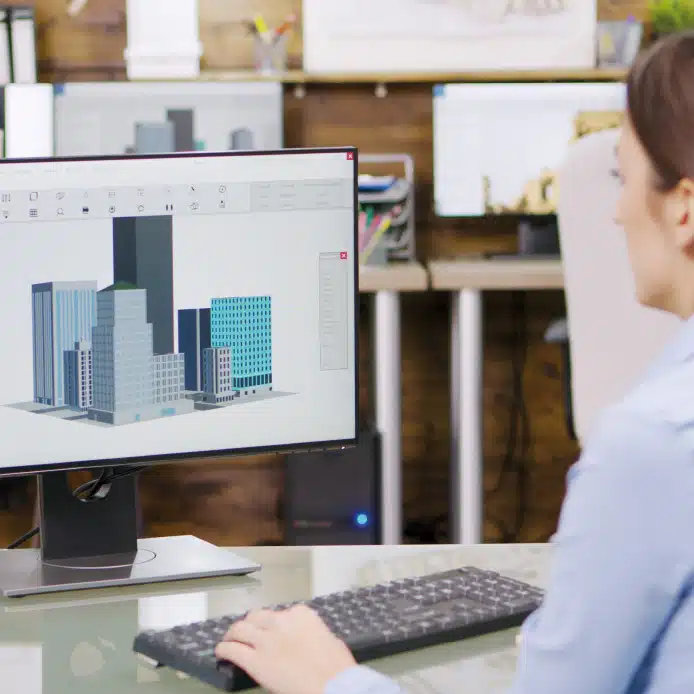
➔ Curso Modelador BIM, especialista Revit – BIM Specialist
Curso de modelador BIM y especialista en Revit, formación avanzada en BIM para profesionales de la construcción. ¡Plazas limitadas! ¡No te quedes fuera!
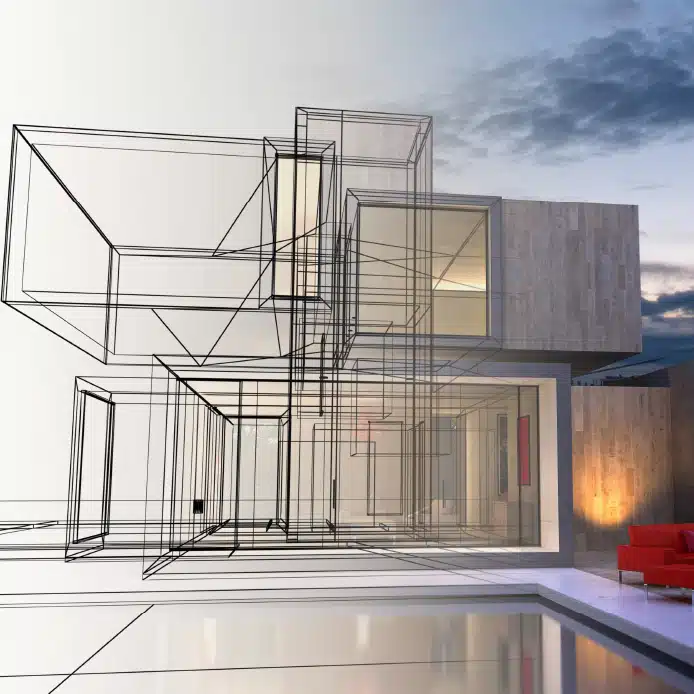
➔ Curso Online Revit Architecture: Essentials v. 2024
Curso online de Revit Architecture Essentials v. 2024, introducción al software Revit para arquitectura.
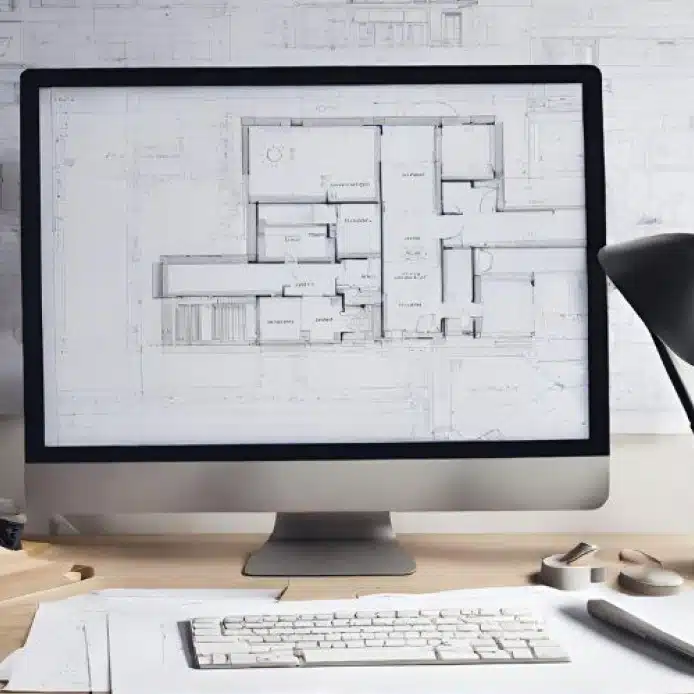
➔ Curso AutoCAD Plant 3D: Modelamiento v. 24
Curso de AutoCAD Plant 3D versión 24, modelamiento avanzado para proyectos de plantas industriales.
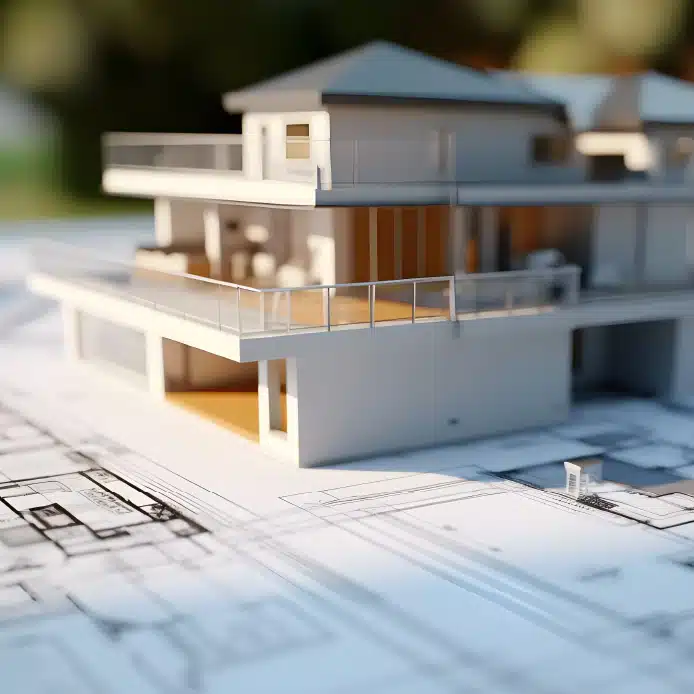
➔ Diseño y Cálculo de Estructuras con CYPE
Curso de diseño y cálculo de estructuras con CYPE, formación en software de ingeniería estructural.
Muy importante! Si tienes dudas o no tienes claro cuál es el curso o máster que más se adapta a tu perfil profesional, escríbeme un e-mail a info@jmhdezhdez.com y estaré encantado de orientarte.

➔ Curso Modelador BIM, especialista Revit – BIM Specialist
Curso de modelador BIM y especialista en Revit, formación avanzada en BIM para profesionales de la construcción. ¡Plazas limitadas! ¡No te quedes fuera!

➔ Curso Online Revit Architecture: Essentials v. 2024
Curso online de Revit Architecture Essentials v. 2024, introducción al software Revit para arquitectura.

➔ Curso AutoCAD Plant 3D: Modelamiento v. 24
Curso de AutoCAD Plant 3D versión 24, modelamiento avanzado para proyectos de plantas industriales.

➔ Diseño y Cálculo de Estructuras con CYPE
Curso de diseño y cálculo de estructuras con CYPE, formación en software de ingeniería estructural.
Muy importante! Si tienes dudas o no tienes claro cuál es el curso o máster que más se adapta a tu perfil profesional, escríbeme un e-mail a info@jmhdezhdez.com y estaré encantado de orientarte.
DESTACADOS EN ARQUITECTURACARRERAS.COM

Estilos Arquitectónicos Modernos: Un Viaje a Través de la Creatividad y la Innovación

ARQUITECTURA CARRERA: Descubre todas las Opciones de la Carrera en Arquitectura y Grados en España

Comparativa de las Mejores Universidades de Arquitectura del Mundo: Internacional, Europa, LATAM

Los Mejores Libros de Arquitectura para Arquitectos

Libros para Estudiar Arquitectura

Libros para Arquitectos Principiantes: Guías y Recursos Esenciales para Comenzar tu Carrera

Los Mejores Libros de Arquitectura para Estudiantes durante la Carrera

Era Digital de la Construcción: Innovaciones Tecnológicas en Arquitectura y Edificación

Comparativa de Los Mejores Ordenadores para Arquitectos en 2024

Las Mejores Laptops para Arquitectura en 2024

Los Mejores Ordenadores de Arquitectura para Estudiantes

Significado de: Términos Clave sobre Arquitectura, Ingeniería y Construcción

Arquitectos: Descubre el Mejor Directorio de Arquitectos que podrás encontrar en Internet (Sólo en AC)
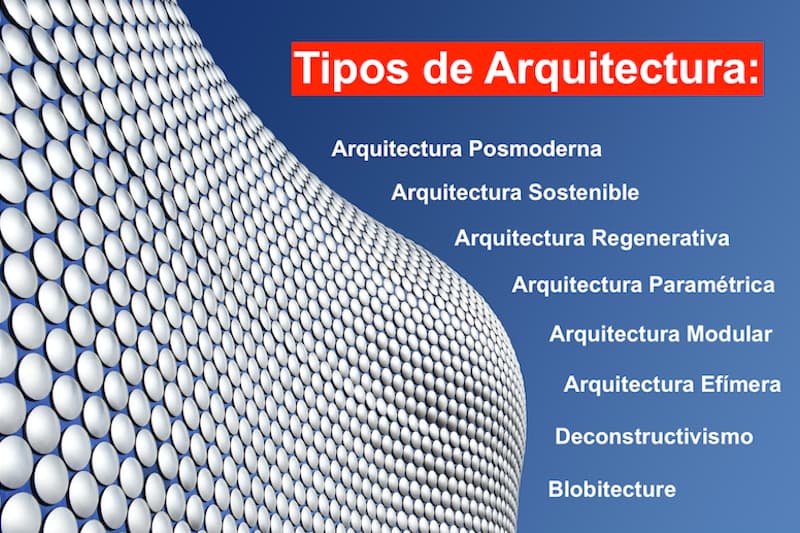
Tipos de Arquitectura: Explorando Más Allá de los Diseños Convencionales

FRASES DE ARQUITECTOS

Roles Arquitectura y Construcción (Profesiones Arquitectura)

Certificaciones para Arquitectos: Avanzando en la Excelencia Profesional

Roles BIM más Demandados en la Industria de la Construcción y el Sector AECO

Software BIM para Proyectos de Arquitectura y Construcción

Tecnología BIM: Beneficios y Ventajas en el sector AECO: Arquitectura, Ingeniería, Construcción y Operaciones

Modelo BIM

Modelo MEP

BIM 3D 4D 5D 6D 7D

AECO: Sector Arquitectura, Ingeniería, Construcción y Operaciones

Avances Tecnológicos en la Industria de la Construcción
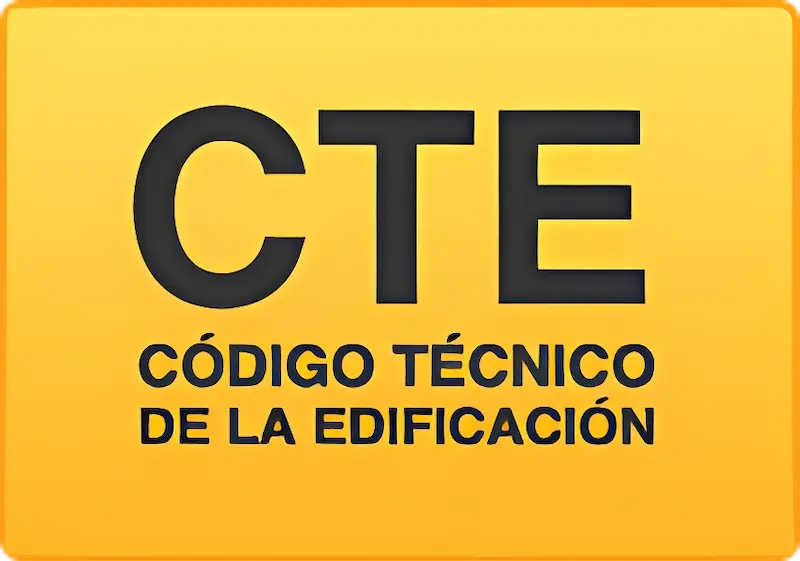
Normas Técnicas de Edificación

!Explora el Mejor Directorio de Construcción! 🚧 🏗️ 👷♂️ (Sólo en ArquitecturaCarreras.com)
Categorías destacadas en el blog!!
▷ LA REVOLUCIÓN DEL BIM.. CURSOS BIM RECOMENDADOS!! RENDERS' FACTORY AECO..
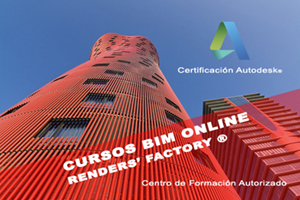
CURSOS BIM ONLINE

▷ Formación BIM
▷ Master en BIM Online
▷ Máster BIM Internacional Oficial Autodesk
▷ Master BIM Manager Online
▷ BIM Expert
▷ BIM Specialist
▷ Curso Revit Arquitectura
▷ Curso familias Revit
▷ De Revit a 3ds Max: Renderizado con V-ray
▷ Curso Revit Estructuras
▷ Curso Revit MEP

Conoce todos los aspectos de la Metodología BIM y Revit
TODOS LOS CURSOS Y MÁSTERES BIM
→ MÁSTERS
→ BIM
→ AUTODESK
→ CYPE
→ DISEÑO MECÁNICO
▷ CURSOS ONLINE RECOMENDADOS!!

- CATEGORÍAS DE CURSOS ONLINE
▷ Formación online
▷ Cursos online
▷ Domestika Cursos
▷ Domestika cupón descuento
▷ Cursos de Arquitectura online
▷ Cursos online de Ilustración
▷ Cursos online de Diseño gráfico
▷ Cursos online de Fotografía y Vídeo
▷ Cursos online de 3D y Animación
▷ Cursos de Diseño online
▷ Cursos online de Dibujo
▷ Cursos online de Bellas Artes
▷ Cursos online de Dirección de Arte
- CURSOS ONLINE DOMESTIKA (POR SOFTWARE)
▷ AutoCAD
▷ SketchUp
▷ 3ds Max
▷ Adobe Photoshop
▷ Adobe Illustrator
▷ Adobe After Effects
▷ Adobe Lightroom
▷ Cinema 4D
▷ Adobe Indesign
LOS MEJORES CURSOS ONLINE PARA CREATIVOS | CURSOS DOMESTIKA
- ÚLTIMAS RESEÑAS CURSOS DOMESTIKA
 ▷ Curso Revit Online, por Majo Mora
▷ Curso Revit Online, por Majo Mora
 ▷ Curso de AutoCAD Online, por Isabel Martínez Abascal
▷ Curso de AutoCAD Online, por Isabel Martínez Abascal
 ▷ Curso SketchUp online, por Alejandro Soriano
▷ Curso SketchUp online, por Alejandro Soriano
 ▷ Curso Infoarquitectura 3D, por Amo Visual 3D
▷ Curso Infoarquitectura 3D, por Amo Visual 3D
 ▷ Curso de Lumion, por Salva Moret
▷ Curso de Lumion, por Salva Moret
MARAVILLAS DEL MUNDO
- CRISTO REDENTOR, BRASIL
- CHICHEN ITZÁ, MEXICO
- COLISEO DE ROMA, ITALIA
- CIUDAD DE PETRA, JORDANIA
- PIRÁMIDES DE GIZA, EGIPTO
- ÓPERA DE SÍDNEY, AUSTRALIA
- EIFFEL TOWER, FRANCIA
- STATUE OF LIBERTY, EE.UU.
- MOÁIS DE LA ISLA DE PASCUA, CHILE
- ACRÓPOLIS DE ATENAS, GRECIA
- TORRE DE PISA, ITALIA
- GOLDEN GATE BRIDGE, EE.UU.
- EMPIRE STATE BUILDING, EE.UU.
- BIG BEN, INGLATERRA
- TORRES PETRONAS, MALASIA
- PUENTE DE CARLOS IV, REPÚBLICA CHECA
- MONTE RUSHMORE, ESTADOS UNIDOS
- MUSEO GUGGENHEIM BILBAO, ESPAÑA
- HOTEL BURJ AL ARAB, UAE
- CAPILLA SIXTINA, ITALIA
- CN TOWER DE TORONTO, CANADÁ
Edificios altos destacados en USA
- ONE WORLD TRADE CENTER, NEW YORK
- 8 SPRUCE STREET, NEW YORK
- AQUA TOWER, CHICAGO
- TRUMP CHICAGO TOWER, CHICAGO
- BANK OF AMERICA TOWER, NEW YORK
- THE CHICAGO SPIRE, (OBRA PARALIZADA)
- THE NEW YORK TIMES TOWER, NEW YORK
- HEARST TOWER, NEW YORK
- ESPIRITO SANTO PLAZA, MIAMI
- MIAMI TOWER, MIAMI
- FOUNTAIN PLACE, DALLAS
- CITICORP CENTER, NEW YORK
- PENNZOIL PLACE, HOUSTON
- SEARS TOWER, CHICAGO
- OLD WORLD TRADE CENTER, NEW YORK
- TRANSAMERICA PYRAMID, SAN FRANCISCO
- JOHN HANCOCK CENTER, CHICAGO
- LAKE POINT TOWER, CHICAGO
- MARINA CITY, CHICAGO
- SEAGRAM BUILDING, NEW YORK
- MILE HIGH TOWER | THE ILLINOIS, (VISIÓN)
- AMERICAN INTERNATIONAL, NEW YORK
- EMPIRE STATE BUILDING, NEW YORK
- 570 LEXINGTON AVENUE, NEW YORK
- CHRYSLER BUILDING, NEW YORK
- WOOLWORTH BUILDING, NEW YORK
- FLATIRON BUILDING, NEW YORK
- HOME INSURANCE BUILDING, CHICAGO
Entradas especiales
MONUMENTOS DESTACADOS EN EL MUNDO
- HSB TURNING TORSO
- CN TOWER, CANADÁ
- ARCO DE ST. LOUIS, MISSOURI
- SPACE NEEDLE, SEATTLE
- TORRES DE CIUDAD SATÉLITE, MÉXICO
- MEMORIAL MONTE RUSHMORE, DAKOTA DEL SUR
- COLUMNA SIN FIN, RUMANÍA
- GOLDEN GATE BRIDGE, SAN FRANCISCO
- EMPIRE STATE BUILDING, NUEVA YORK
- CHRYSLER BUILDING, NUEVA YORK
- CRISTO REDENTOR, RIO DE JANEIRO
- LA PEDRERA, BARCELONA
- EL PENSADOR DE RODIN, PARÍS
- EDIFICIO FLATIRON, NUEVA YORK
- TOWER BRIDGE (PUENTE TORRE), LONDRES
- TORRE EIFFEL, PARÍS
- ESTATUA DE LA LIBERTAD, NUEVA YORK
- HOME INSURANCE BUILDING, CHICAGO
- BROOKLYN BRIDGE, NUEVA YORK
- WASHINGTON MONUMENT, WASHINGTON D.C.
- STATUE OF FREEDOM CAPITOLIO, WA DC
- BIG BEN, LONDRES
- PUERTA DE BRANDENBURGO, BERLÍN
- FONTANA DI TREVI, ROMA
- FUENTE DE LOS CUATRO RÍOS, ROMA
- ÉXTASIS DE SANTA TERESA, ROMA
- FUENTE DEL TRITÓN, ROMA
- PUENTE DE RIALTO, VENECIA
- TUMBA DE MICHELANGELO, FLORENCIA
- CAPILLA SIXTINA, ROMA
- DAVID DE MIGUEL ÁNGEL, FLORENCIA
- PUENTE DE CARLOS, PRAGA
- PONTE VECCHIO, FLORENCIA
- TORRE DE PISA, LA TOSCANA
- MOÁIS DE LA ISLA DE PASCUA, CHILE
- CHICHEN ITZÁ, YUCATÁN
- LAOCOONTE Y SUS HIJOS, ROMA
- COLISEO DE ROMA, ITALIA
- VICTORIA DE SAMOTRACIA, MUSEO DEL LOUVRE
- VENUS DE MILO
- CARIÁTIDES DE ATENAS
- ACRÓPOLIS DE ATENAS, GRECIA
- PETRA, JORNANIA
- EL ESCRIBA SENTADO DEL LOUVRE
- PIRAMIDES DE GIZA, EGIPTO
¿Sabías qué...? muy interesantes! Curiosidades: Arquitectura, Escultura, Pintura y Arte
PUENTES VANGUARDISTAS DESTACADOS
- Infinity Bridge, Stockton
- Juscelino Kubitschek Bridge, Brasilia
- Millenium Bridge, London
- Golden Gate Bridge, San Francisco
- Brooklyn Bridge, New York City
- Megyeri Bridge, Budapest
- Millau Viaduct, Aveyron
- Harilaos Trikoupis Bridge, Athens
- Seri Wawasan Bridge, Putrajaya
- Reiman Bridge, Milwaukee
- UFO Bridge, Bratislava
- Puente del Alamillo, Sevilla
- Sundial Bridge, Redding
- Reggio Emilia Bridges, Bolonia
- Puente del Tercer Milenio, Zaragoza
- Campo Volantin Footbridge, Bilbao
- Puente de la Barqueta, Sevilla
- Humber River Bridge, Toronto
- Puente Bach de Roda, Barcelona
- BP Bridge, Chicago
- Pasarela de la Arganzuela, Madrid
- Erasmus Bridge, Rotterdam
- Puente de la Mujer, Buenos Aires
- Gateshead Millenium Bridge, London
CUADROS FAMOSOS (PINTURA)
- El Guernica (Picasso)
- La Danza (Henri Matisse)
- El beso (Gustav Klimt)
- El grito (Edvard Munch)
- La Noche estrellada (Vincent van Gogh)
- Un baño en Asnières (Georges Seurat)
- Impresionismo (Pintores destacados)
- La Libertad guiando al pueblo (Delacroix)
- Saturno devorando a un hijo (Goya)
- La Joven de la Perla (Vermeer)
- La Venus del espejo (Diego Velázquez)
- La lechera (Vermeer de Delft)
- La ronda de noche (Rembrandt)
- Hipómenes y Atalanta (Guido Reni)
- La Vocación de San Mateo Caravaggio
- Cabeza de Medusa (Caravaggio)
- Frescos de la Capilla Sixtina (Miguel Ángel)
- Almuerzo sobre la hierba de Manet
REFERENCIAS PARA ARQUITECTOS Y ESTUDIANTES DE ARQUITECTURA Y DISEÑO
Arte Contemporáneo
- Johannes Wessmark (Hiperrealismo)
- Jaume Plensa
- Nathan Sawaya (Arte LEGO)
- Serge Marshennikov (Hiperrealismo)
- Escultura Calatrava Chicago
- Bou (Santiago Calatrava)
- Alberto Giacometti
- Frases Pablo Picasso
- El Ángel del Norte (Antony Gormley)
- El hombre que camina I (Alberto Giacometti)
- Chicago Picasso
- Torres Satélite (Luis Barragán)
- John Kacere (Fotorrealismo)
- El Guernica de Picasso
- La musa dormida (Brancusi)
- El Arte de: Damian Lechoszest
- Frescos de la Capilla Sixtina (Miguel Ángel)
- Almuerzo sobre la hierba de Manet
Mitología, Historia, Leyendas
- Lady Godiva
- Eros y Psique
- Hipómenes y Atalanta (Guido Reni)
- La Creación de Adán de Miguel Ángel
- La Piedad de Miguel Ángel
- Arquitectura Postmoderna
- Frases Gaudí
- Los Rascacielos más altos del Mundo
- Todos los ¿Sabías qué...?
- Deconstructivismo
- Burj Khalifa
- Obras destacadas en: El Museo del Louvre
- Famous phrases
- Pensador de Rodin
- Frases Oscar Niemeyer
www.jmhdezhdez.com
(Blog sobre Arquitectura y Arte)
Copyright ©
José Miguel Hernández Hernández. All rights reserved


































































